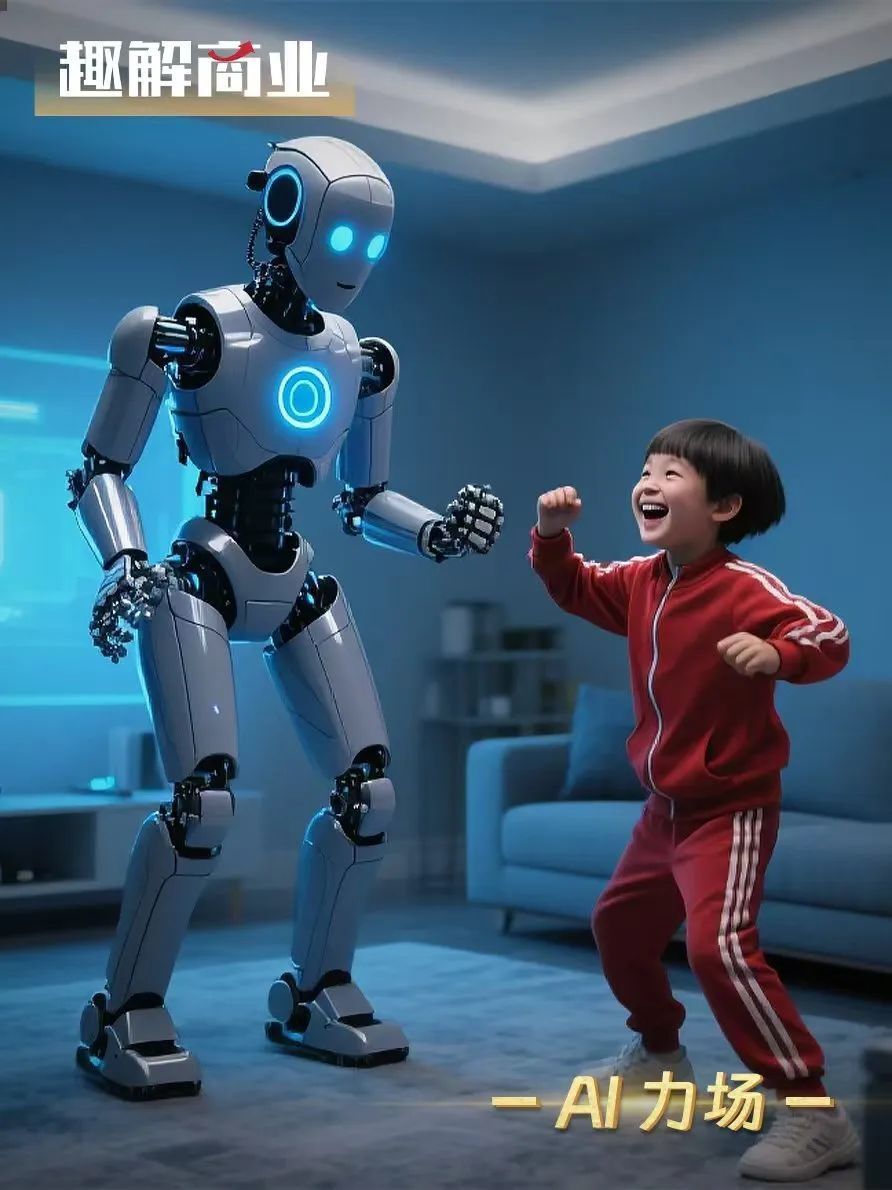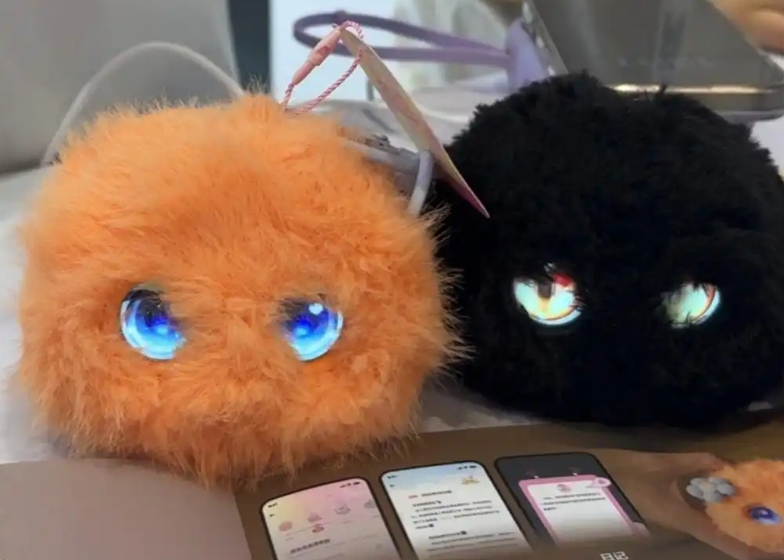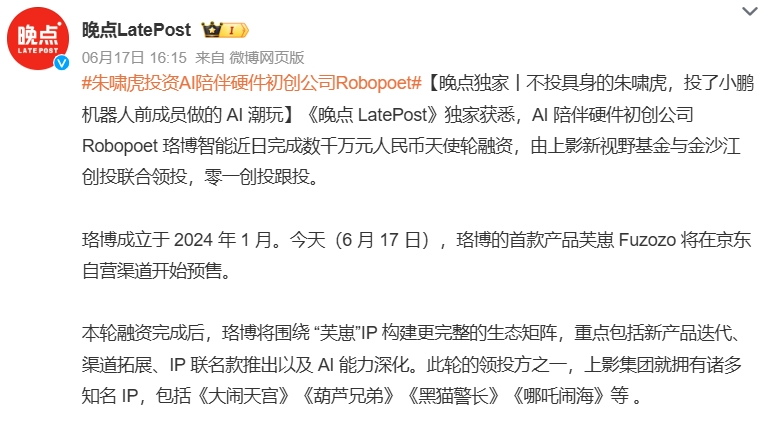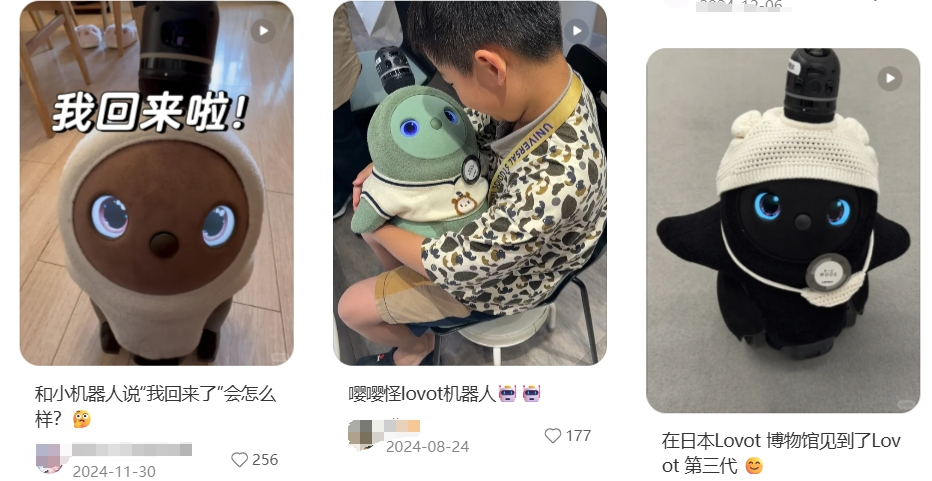When AI Becomes a 'Companion': Who Profits from 'Subscription-Based Emotions'?
![]() 08/05 2025
08/05 2025
![]() 461
461

AI hardware is becoming increasingly adept at understanding humans.
The 2014 Academy Awards bestowed the Original Screenplay award on the sci-fi film 'Her', depicting a divorced man's romance with an AI. Notably, the film is set precisely in the year 2025.
Fast forward to today, falling in love with AI is no longer a novelty; various forms of companion robots equipped with AI capabilities have seamlessly integrated into human daily life.
01. AI Dolls as 'Emotional Partners'
At the recently concluded 2025 WAIC World Artificial Intelligence Conference, robots remained the central attraction, but a niche segment quietly stood out—AI companion robots.
At the exhibition, a group of 'emotional' robots garnered significant attention; among them, the soft and fluffy 'Fuzozo' shone brightly. Launched by Luobo Intelligence in 2024, this AI-powered trendy toy, also known as 'Fuzozo', focuses on 'portable emotional companionship'.
In contrast to industrial-grade robots costing tens of thousands of dollars, these adorable 'little guys' have captivated many fans with their engaging dialogue, emotional resonance, and frequent interactions.
 Source: Weibo Screenshot
Source: Weibo Screenshot
'I don't have kids or pets, so I have an 'AI pet'.' Weiwei (pseudonym), who recently purchased a Fuzozo, laughed and admitted that she had dodged many 'consumption traps' only to fall into the 'pit' of AI companionship.
According to 'Qu Jie Shang Ye', Fuzozo employs the five elements (metal, wood, water, fire, earth) to design colors and set different basic personalities. Based on these personalities, it also incorporates the more detailed personality possibilities of MBTI, allowing even Fuzozos with the same 'attributes' to develop distinct personalities.
'Apart from factory settings, Fuzozo collects the owner's speech patterns and data from daily interactions, eventually becoming a unique 'pet'.' Weiwei explained her reason for ordering Fuzozo, noting that she had lived alone for years but was too busy to keep a pet. 'When I feel lonely, I want something that can accompany me only when I need it and doesn't require constant 'responsibility'. An 'AI pet' like Fuzozo perfectly fits my needs.'
 Source: Xiaohongshu Screenshot
Source: Xiaohongshu Screenshot
In addition to Fuzozo, 'Mengyou Intelligence's' Ropet and 'UBTECH's' MengUU are similar AI trendy toy products. These AI toys feature fluffy, cute appearances, multimodal interaction methods (vision, language), and corresponding responses, such as Fuzozo's conversational ability and Ropet's ability to make sounds and simulate feeding.
The rise of AI trendy toys is a convergence of technological maturity and market demand.
From a technological standpoint, 'Half of those working in embodied intelligence now are talents that overflowed from the intelligent driving sector.' said an intelligent driving technician. This is because the underlying logic of intelligent driving and embodied intelligence is similar, involving a cycle of perception → decision-making → execution.
Moreover, compared to dynamic humanoid robots, static companion robots have lower requirements for appearance technology and other aspects. Hence, as intelligent driving matures, the companion robot sector has also flourished.
From a market demand perspective, the role of 'companionship' perfectly addresses the need for 'loneliness'.
The 'lonely economy' is a blend of two economies: the single economy and the silver hair economy. Data shows that in 2025, China's single population exceeded 240 million, accounting for nearly a quarter of the adult population; the population aged 60 and above accounts for 22.0%, both representing solid 'trillion-level' markets.
Apart from singles and the elderly, another audience for companion robots is children; in other words, singles, parents, and the elderly are all targeted users of companion robots.
Imagine this: In the morning, the household butler robot reminds you of the day's weather and itinerary; upon returning home at night, the cooking robot serves a steaming hot dinner; in the middle of the night, the companion robot tells bedtime stories to the children... Such scenes are no longer confined to science fiction movies.
02. What Exactly Constitutes 'Companionship'?
With robust demand, increased supply, and capital influx, the companion robot sector has become tumultuous for a while.
Capital Today and Cathay Capital invested in consumer-grade robot Vita Motors, companion robot Lingtong Robotics received investment from iFLYTEK, and Tencent and Sequoia China invested in household robot CloudMinds...
Even Zhu Xiaohu of GSR Ventures, who had publicly stated he would 'exit the humanoid robot business in batches', invested in Fuzozo's parent company, Robopoet Luobo Intelligence. Zhu Xiaohu believes that 'AI creating emotional value is a reliable direction in today's large model application field.'
 Source: Weibo Screenshot
Source: Weibo Screenshot
According to Sun Zhaozhi, the founder of Luobo Intelligence, the real competition in the emotional companion robot sector has yet to commence, with many large companies still preparing to enter the market.
In fact, before the emergence of companion robots, AI chat companionship had already become a battleground for major companies, such as ByteDance's Mao Xiang, Google's Character.AI, Meituan's WOW, and CMGE's Dream Island... Everyone has long recognized that 'companionship' is an excellent scenario for AI application.
This is indeed true for software; 'chat companionship' is a more mature commercial direction than 'dialogue'. However, when this 'companionship' transitions from software to a combination of software and hardware, more challenges arise.
The primary question is whether 'companionship' is a pseudo-proposition altogether?
A blogger on Xiaohongshu reviews AI companion products, and almost every post elicits a similar question in the comments: What's the difference between your product and me directly talking to ChatGPT?
 Source: Xiaohongshu Screenshot
Source: Xiaohongshu Screenshot
This is also the reason behind many people's pessimism towards companion robot products. Regarding this query, Yang Jianbo, the founder of 'Can Technology', which launched the companion robot puppy Loona, believes: 'We observe various roles in people's lives, such as loved ones, children, pets, and other roles that provide emotional value. We find that most of the time, they are not intently communicating with you. We call this state 'presence'. Part of the opportunity stems from this presence. In various aspects of family life, interaction is seamless, without the need to initiate a conversation; conversations naturally unfold during activities. AI companionship is a portable, convenient product that transcends time and space.'
For instance, Lovot actively seeks out its owner using a 360-degree hemispherical camera and begs for 'cuddles'. If the owner doesn't interact for long, it might make sounds or movements to attract attention, like gently shaking its body or making cooing sounds.
 Source: Xiaohongshu Screenshot
Source: Xiaohongshu Screenshot
'Presence' itself is companionship, and this viewpoint can also address another controversial topic regarding companion robots—is this product actually 'useful'? Wang Ning of Pop Mart once said that Pop Mart lacks 'toolness' because once there's a 'toolness' demand, it becomes limited.
Weiwei strongly agrees, 'People who spend money on companionship and emotional value are not concerned about practicality. Spending money on companionship itself doesn't require too many 'tool attributes'.'
'Tool attributes' and 'companionship attributes' are not contradictory. 'Tool attributes' are colloquially referred to as 'usefulness', and this 'usefulness' can also be defined in an 'abstract' sense, such as relieving stress and making users happy, which is also a form of 'usefulness'.
Certainly, some household companion robots provide more specific tool attributes in addition to emotional value, such as monitoring user health and doing housework.
For example, Urichi Robotics Technology Company is gradually advancing its plan to 'bring robots into homes'. Its latest generation of wheeled humanoid robot Wanda 2.0 offers multi-version software and hardware adaptation solutions tailored to customers' different scenario needs. It can play chess, barbecue, fry eggs, mix drinks, and even wash dishes. Additionally, Xingchen Intelligence's AI robot assistant Astribot S1 can help the elderly push wheelchairs, serve tea and water, assist in health maintenance, and accompany them in playing tai chi, square dancing, table tennis... From medical health maintenance to children's companionship, an era of robots that 'accompany you' is dawning.
03. When 'Companionship' Becomes a 'Business'
When 'companionship' transforms into a business, how should it be monetized?
Currently, companion robots are primarily monetized through a combination of hardware and software sales. Hardware pricing varies, while software employs a subscription model, mainly for algorithm upgrades in emotional interaction modes, user experience enhancements, etc.
This poses two significant challenges for companion robots: cost control in hardware mass production and technological advancements in perception and interaction.
In terms of hardware, mass production and cost control of robot hardware present a challenge. For instance, if the appearance is a collaboration with an IP image, the IP licensing fee becomes a substantial portion of the expenditure, with other major costs stemming from intelligent hardware and sensors.
 Source: Xiaohongshu Screenshot
Source: Xiaohongshu Screenshot
In terms of software and technology, unlike completely static dolls, companion robots are 'nurturing' and will grow; therefore, the most crucial aspect for companion robots is to 'read between the lines', which is also the key to the product becoming a 'unique' companion based on the 'owner's' habits. Additionally, if the companion robot has more targeted scenarios, such as children's reading or fall prevention detection for the elderly, it will also incur the cost of vertical data collection.
The formation of this 'nurturing' system necessitates the support of multimodal interaction. '70% of human communication relies on non-verbal elements, like a glance or an expression when communicating with a visitor, which helps us judge the visitor's state, whereas AI requires the visitor to describe their situation in words, which has significant limitations,' said a psychological counselor. Therefore, the perception of robots is exceptionally crucial.
This 'perception' involves not just seeing and hearing but also analyzing and distinguishing. The same words spoken in different tones can have entirely different meanings. Here lies the 'emotional value'—whether the robot can recognize and provide the user with the desired response.
Sun Zhaozhi previously told the media that Luobo Intelligence has invested heavily in independently developing a long-term memory, emotion, and personality system, as well as a nurturing system; he believes that the difficulty lies not in the underlying technology but in understanding this vertical scenario and maximizing technology application.
The 'perception' ability requires a vast number of samples and time to cultivate, which involves balancing robot data collection and user privacy, as well as governance at the ethical and moral levels.
Some entrepreneurs in the AI companionship sector believe that improving the recognition of sensitive words and appropriate human intervention are the best ways to maintain AI ethical boundaries at the technical level, such as enabling human intervention options when extreme psychology is detected in users. 'Since we have chosen the path of emotions and companionship to generate revenue, maintaining ethical boundaries and doing our utmost to safeguard users' mental health are also the responsibilities of entrepreneurs.'
Overall, there is currently a robust market for intelligent companionship products. According to a Grand View Research report, the market size is projected to jump from $28.19 billion in 2024 to $140.754 billion in 2030, with a compound annual growth rate of 30.8%.
As AI becomes 'more understanding of humans', companion robots are penetrating various scenarios of human life; they will nurture a new generation of 'AI natives' who grow up with AI companionship and will also be accustomed to seeking help from AI and utilizing AI tools to solve problems.








